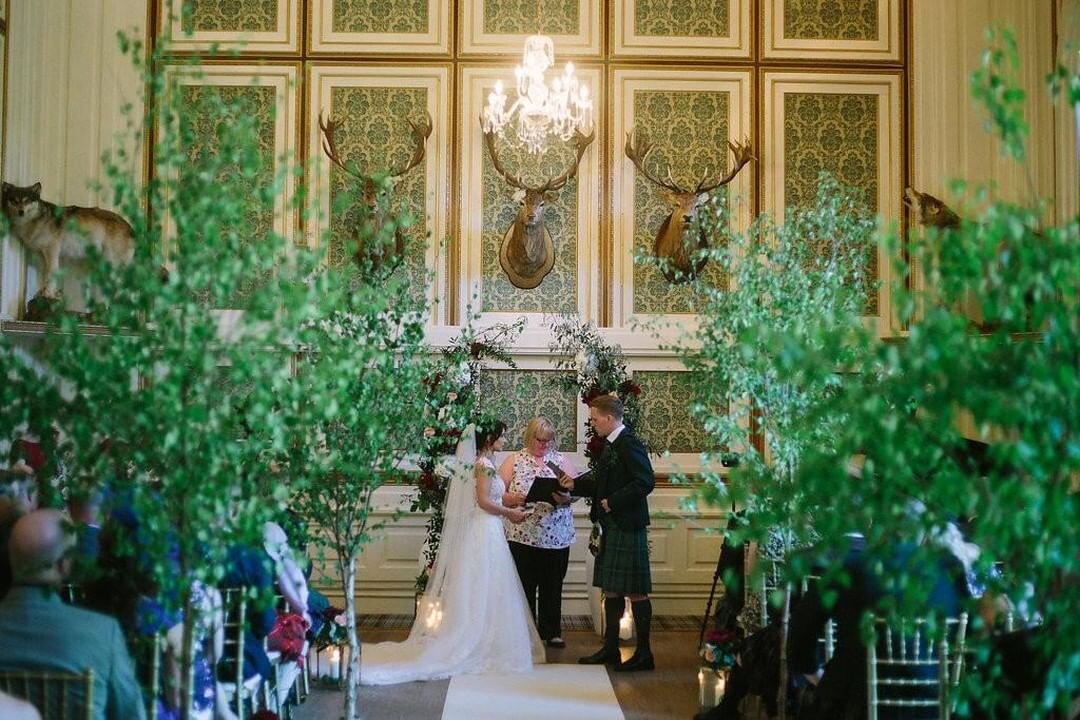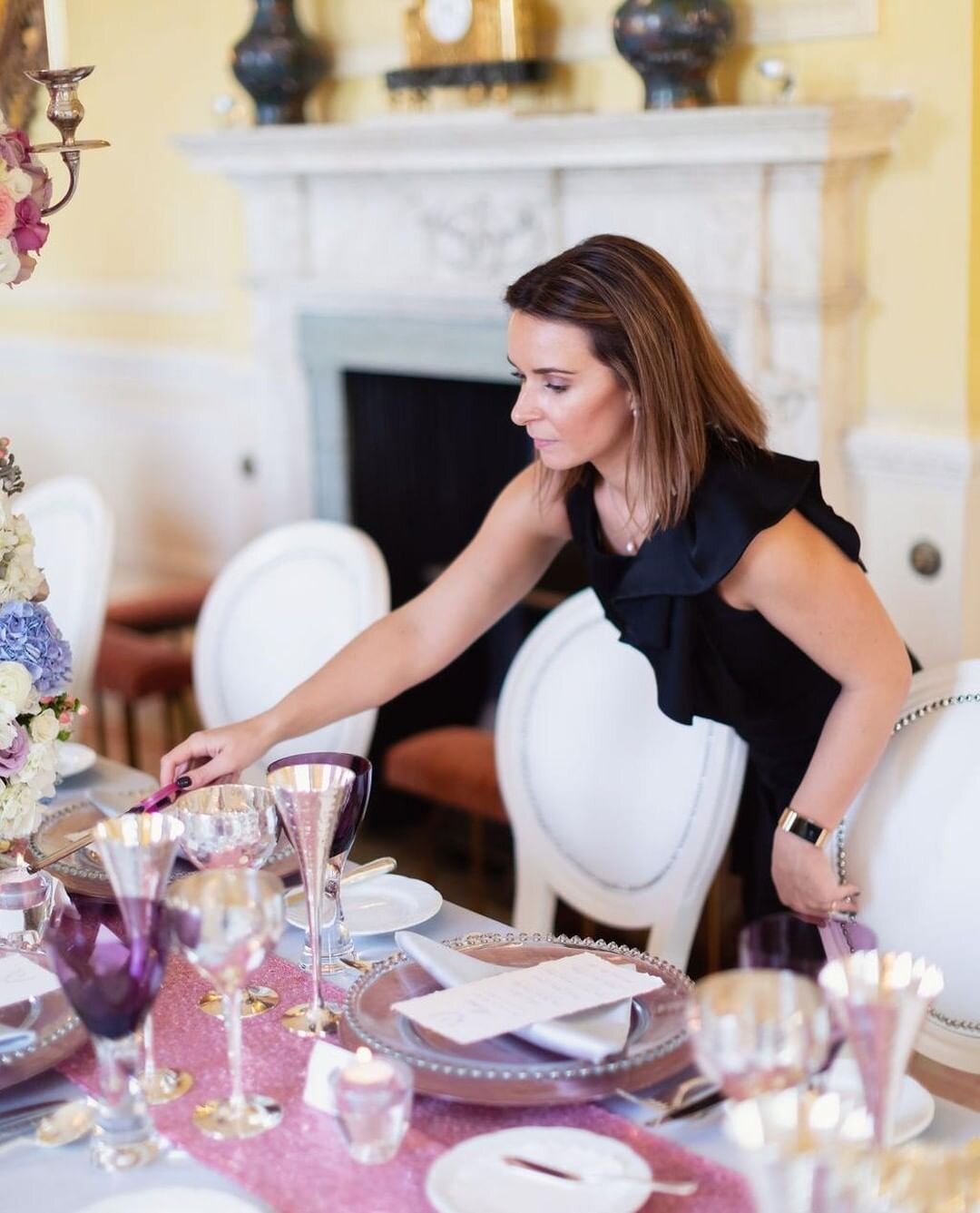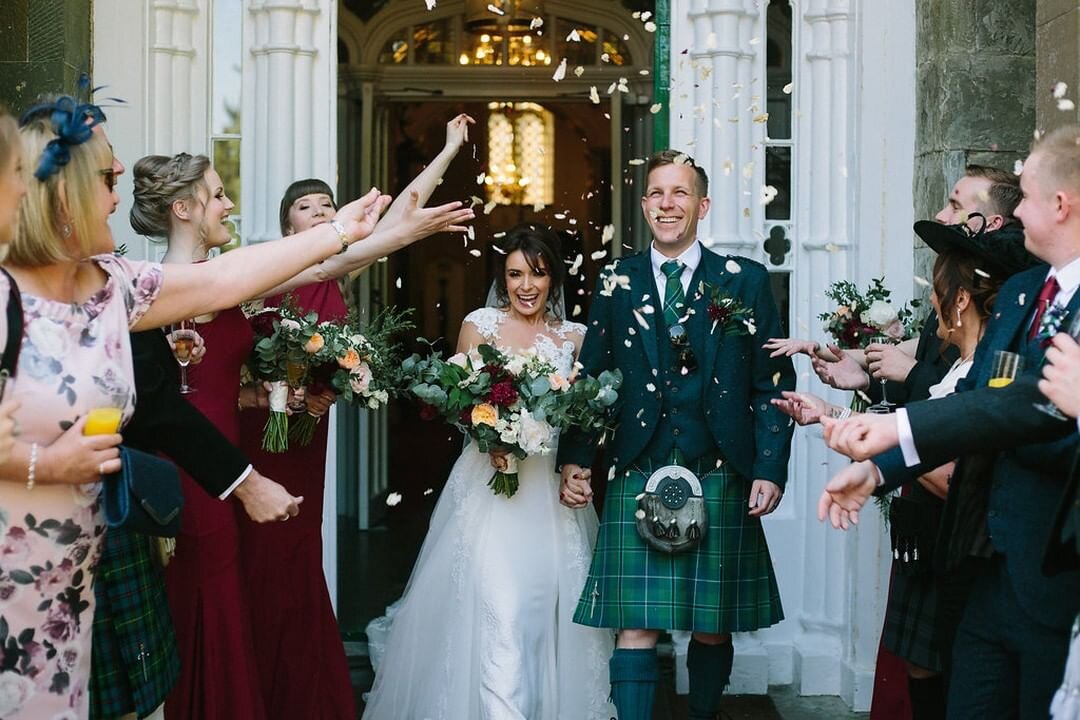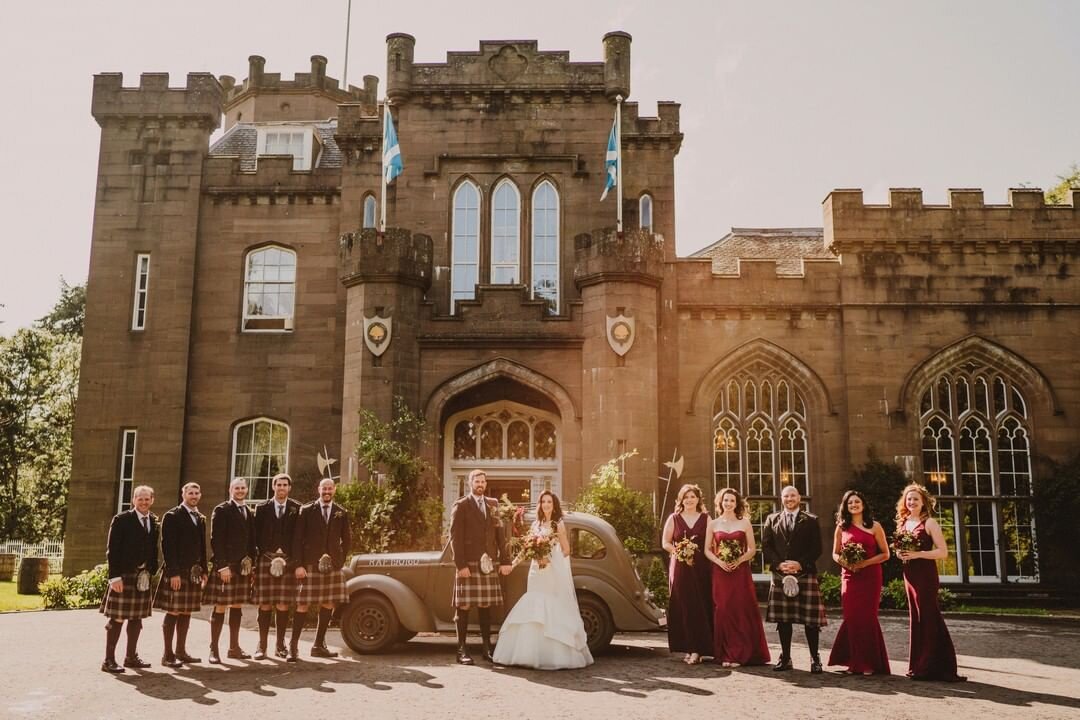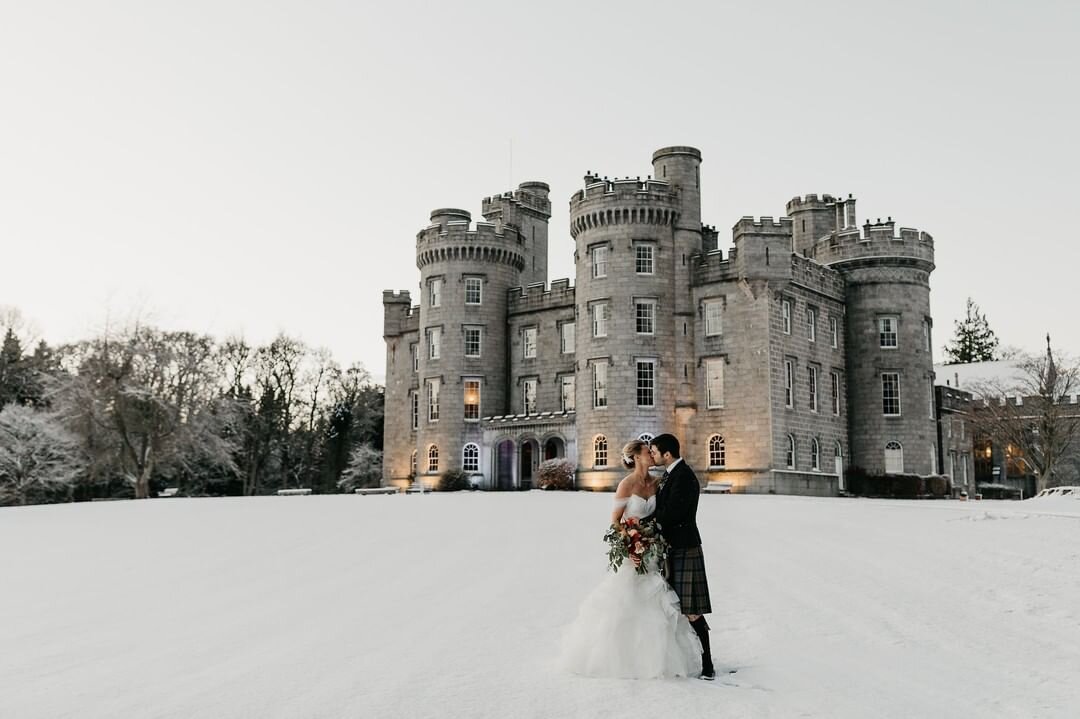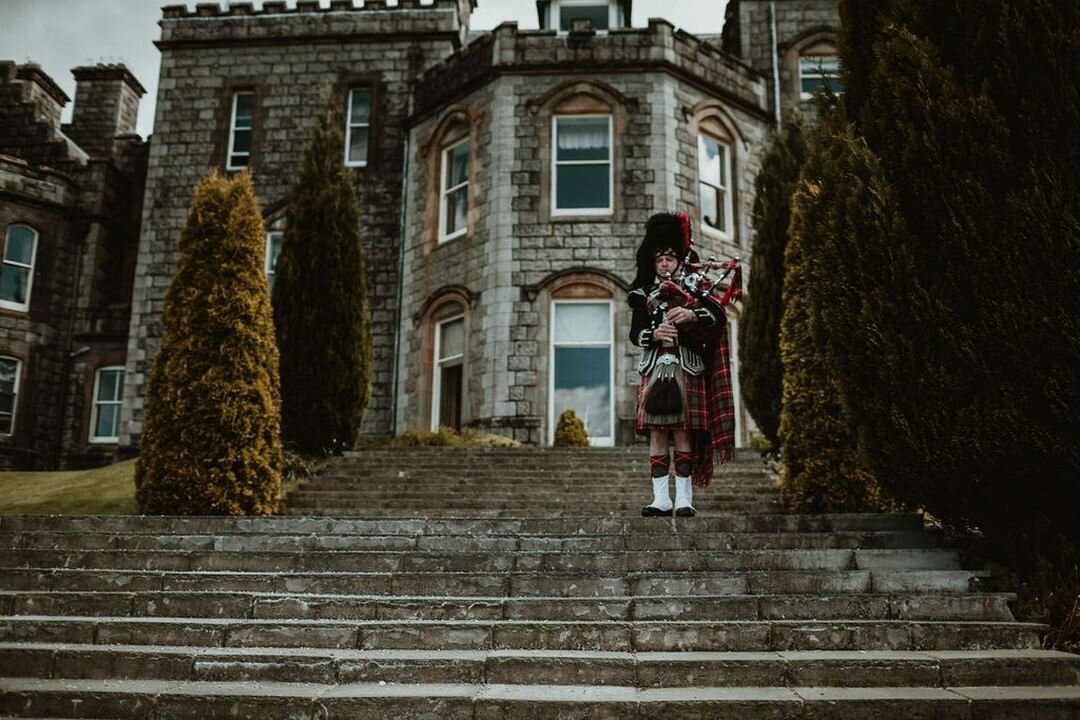A Planners Guide to Getting Married in the Scottish Highlands
Beloved Scottish Traditions to Incorporate into Your Highlands Wedding
The creatives at Timeless White recognise that there are few places in the world more stunning than Scotland, with its natural beauty and rich history. We asked local wedding planner Emma to share with us her on-the-ground advice and local insight for planning a Destination Wedding in the Scottish Highlands.
Emma of Timeless White — “The Scottish Highlands are the backdrop to some of the most wildly romantic and breathtaking wedding venues in the country. Whether your vision for your wedding is a luxury castle, a clifftop ruin or surrounded by rolling hills, the Highlands can offer you the perfect location.
If you’re considering an elopement wedding from abroad then let us convince you that the Highlands is the place to do it with a sample of the venues you can choose from as well as the essential paperwork you’ll need to make the dream become a reality. We’ve also included some Scottish wedding traditions that you can incorporate to make your Highlands wedding feel as authentic as possible.”
Wedding Venues
There is an abundance of gorgeous scenery and castles in the Scottish Highlands that make stunning wedding venues for all sizes of parties. One thing that makes Scotland unique is that you can legally have your ceremony absolutely anywhere you want. If that makes the decision a bit difficult for you, then here’s some venues in the Scottish Highlands that we think are really special.
Achnagairn Castle
Located on the stunning Achnagairn Estate in Inverness, this beautiful castle wedding venue was awarded the Highlands “Best Wedding Venue” by the Scottish Wedding Awards, and has been named Best Wedding Venue in the UK by the prestigious Harper’s Bazaar Magazine!
There’s really no better place to host a grand castle wedding- complete with an ornate ballroom, 24 designer bedrooms and luxury lodges so that guests can stay. Although the castle has retained many of its period features, each room in the castle has been expertly modernised, including the reception rooms – so you can host your post-ceremony celebrations in complete style.
Brodie Castle
Renowned for its elegant interiors, intricate ceilings and world-famous art collection, Brodie Castle is a wonderful setting for intimate castle weddings in the highlands.
Dating from the 16th century, Brodie Castle is an iconic Scottish tower house with a spacious Drawing Room and an extensive Brodie family library displaying over 6000 volumes. Set amidst 71 hectares of peaceful parkland, Brodie is within easy access of Inverness, the capital of the Highlands.
Eilean Donan Castle
This picturesque castle lies on its own small island with a connecting bridge to the mainland. Arguably one of the most photographed castles in Scotland, Eilean Donan often appears in TV and films such as Highlander and the 1999 James Bond, The World Is Not Enough.
With the castle being so popular, weddings take place after 6pm meaning the public no longer have access and the castle is all yours to enjoy your sunset ceremony. During the closed season, however, you can get married any time of the day either in the castle or overlooking the water surrounded by mountains of the Isle of Skye.
Inverlochy Castle
Inverlochy is Scotland's finest luxury hotel and restaurant uniquely located amongst the glens, lochs and mountains of the West Highlands of Scotland. In September 1873 during a trip to Balmoral, Queen Victoria spent a week at Inverlochy sketching and painting where she wrote in her diaries 'I never saw a lovelier or more romantic spot'.
At Inverlochy there is particular emphasis on the elegant surroundings and atmosphere of the hotel with each of the 17 bedrooms, all with private bathrooms, have their own individual design and character, along with splendid views of the grounds and surrounding Highland mountains.
Things To Do in The Highlands
Ben Nevis and Fort William
There are many quaint towns in the Scottish Highlands with Fort William being the largest and most popular with tourists. Known as the gateway to Ben Nevis, this would be the perfect town to visit for dinner and a pint after climbing the highest peak in the UK. For those who prefer a more chilled excursion, the town holds The West Highland Museum as well as the Ben Nevis Distillery in which you can explore whisky production and maybe sample one or two..
The Old Man of Storr
Another hill walking location, the Old Man of Storr is a picturesque rock formation situated north of the Isle of Skye.
The Jacobite Railway
Take a gorgeous train ride through some of Scotland’s most stunning Highlands, aboard the train which crosses the Glenfinnan Bridge (this is the Bridge which inspired the look of the Harry Potter railway bridge).
Inverness City
Head into the city of Inverness, described as the culture capital of the Highlands, there is an art gallery and botanical gardens as well as the 18th Century Inverness Cathedral.
John O’ Groats
This small coastal village is the most Northern point in mainland Britain and has unspoiled, dramatic scenery as well as interesting wildlife such as seals, dolphins, and killer whales in the surrounding waters.
Isle of Skye
The Isle of Skye is connected to the west of Scotland via a bridge and is one of the most scenic Islands in the country.
Scottish Wedding Traditions
As a wedding specialist company, we see lots of different traditions from all over the world at our weddings. Couples who elope to Scotland from America, Canada or Europe like to incorporate as much Scottish tradition into their day as possible as well as local Scots who want to keep their heritage at the heart of their ceremony.
Bagpipes and Kilts
Bagpipes are traditionally played as guests are entering and leaving the Wedding Ceremony – the sound of the Pipes in Scotland symbolises the start of something great! Usually the happy couple are piped into the dining room, full of their guests, and everyone tends to stamp their feet and clap along with the piper!
Pipers are usually dressed in a full traditional Scottish kilt outfit. You’d struggle to go to a Scottish wedding and not find at least one man in a kilt. Traditionally the groom and groomsmen all wear kilts of the same tartan, often the clan tartan of the family name. The bride also sometimes incorporates the tartan into a sash, shawl or her bouquet ribbons.
Drinking from the Quaich
The quiach is a two handled ‘loving cup’ that newlyweds use for their first toast together as a married couple. It is usually filled with whisky and both the bride and Groom serve each other a sip from the quaich. This symbolises the trust between the married couple, to be so careful that not a drop is spilled!
Handfasting - Tying the knot
Handfasting is the process of tying the couple's hands together with cloth or ribbon to symbolise their connection and devotion to each other. This tradition is usually used as part of the ceremony to strengthen the vows and to show a commitment to your partner and the relationship. This is where the terms 'tying the knot' and 'taking each others hand in marriage' come from.
Beautiful in Every Season
Scotland is lush and beautiful all year round. The greenest time of the year is May to August and the temperature is usually warmer during these months too. By September the leaves begin to turn auburn and yellow and throughout October the leaves remain on the trees, before falling early November for a darker, richer toned landscape. December through to March is our traditional winter and late January to mid February are the best times to expect Snow. We haven’t had a white Christmas in a long time!
Legal Requirements
This may seem like the boring section but it is important stuff! To be legally married in Scotland, you must fulfil the following criteria:
- You and your partner must both be single, divorced, widowed or have dissolved a previously legally recognised partnership.
- You must be over the age of sixteen.
- You must not be closely related to each other.
- You must be capable of understanding the commitment of marriage.
All Civil, Religious, Humanist and Same-Sex marriages conducted in Scotland by a person recognised as a legal officiant are legally recognised throughout the world, therefore making Scotland one of the most attractive locations for amazing destination and elopement weddings.
If you’re planning on eloping to Scotland for your wedding, with some planning and preparation it is feasible that you can arrange a legal destination or elopement marriage in Scotland within three months. Here’s what you’ll need to legally make it happen;
Three months before your wedding day (and no earlier) you can apply for a marriage visitors visa (If you live outwith the EU economic zone). Documents you will need to make this application include a passport, proof of identification, bank statements and pay cheques.
After applying for your visa you should get in touch with the registry office local to your chosen venue and submit a marriage notice form, also known as an M10 form. This includes visa confirmation, witness details and any information about past marriages and you must ensure you submit this no later than 29 days before your wedding.
The week of your Wedding, your marriage schedule will become available for you to collect – note it must be one of you who collects it. This must be returned to your local registry office either by your Registrar (in the case of a Civil ceremony) or by you no later than 7 days after your wedding (in the case of a Religious-Belief or Humanist ceremony).
The overall process takes around three months.
Article by: Emma of Timeless White. Images Supplied.


